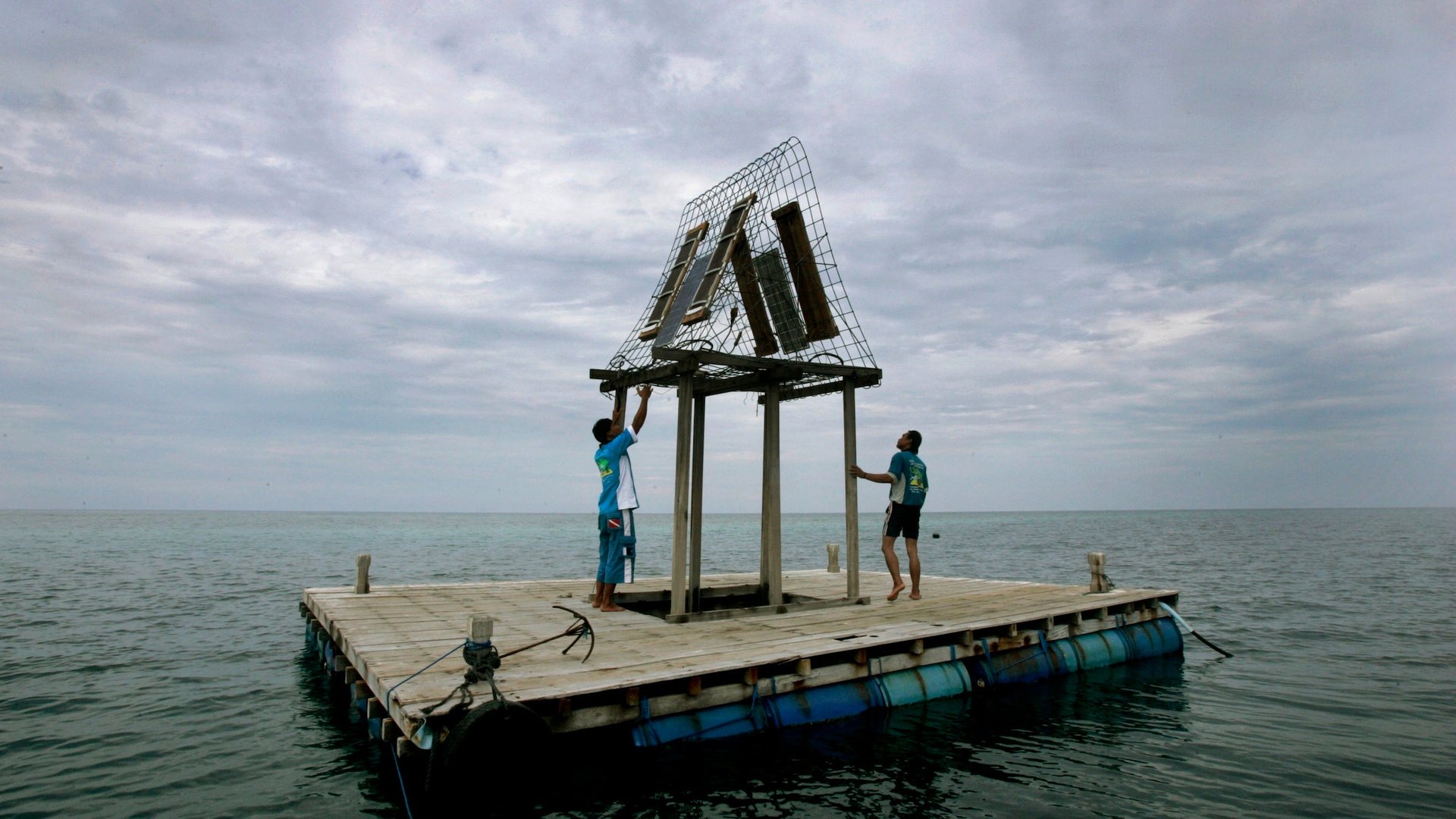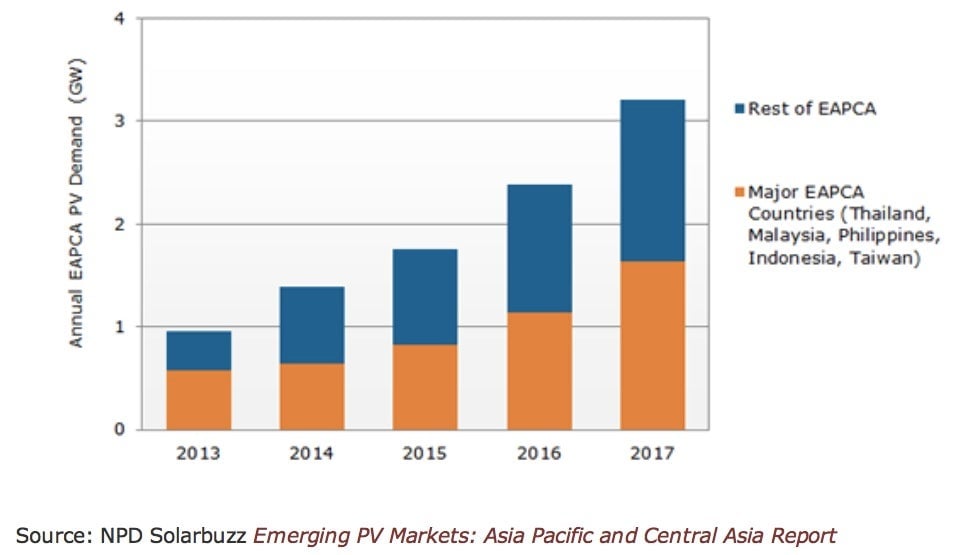Thailand, Indonesia, and Malaysia are the hot new emerging solar markets
Malaysia, the Philippines and other Asia-Pacific nations used to be the places where solar panels made by American companies such as First Solar and SunPower were assembled, but not sold. Now, however, those countries are also becoming serious markets for the panels in their own right.


Malaysia, the Philippines and other Asia-Pacific nations used to be the places where solar panels made by American companies such as First Solar and SunPower were assembled, but not sold. Now, however, those countries are also becoming serious markets for the panels in their own right.
Asia-Pacific and Central Asian nations will install more than 3,000 megawatts of photovoltaic power by 2017, up from 723 megawatts last year, according to a projection by NPD SolarBuzz, a New York-based market research firm. That’s an annual growth rate of 28%, and the region will comprise 5% of global demand in 2017, up from 2% today.

The forecast excludes China, which is a behemoth by comparison: It plans to commission 10,000 megawatts of solar projects this year alone, a 150% jump from 2012. (By comparison, the US installed more than 3,000 megawatts in 2012 and is projected to have 7,848 megawatts online by 2017.)
Even so, if these estimates prove accurate, it would be good news for global solar-panel makers struggling with overcapacity and a decline in European markets. And since NPD SolarBuzz predicts that 64% of all solar systems will be ground-based power plants that supply electricity on a large scale rather than rooftop installations for individual buildings, that could mean new markets for manufacturers like the First Solar and SunPower, which not only make panels but also develop bigger projects.
Of these countries, Thailand is poised to become the biggest photovoltaic market, according to the report, as it grapples with growing electricity demand and promotes policies to reduce the country’s dependence on imported energy. Indonesia plans to install 1,000 megawatts by 2025, though that will still only be 0.3% of the country’s energy production. Even impoverished Bangladesh has solar ambitions, with plans to put a million photovoltaic systems in villages not connected to the national power grid by 2016.
Altogether, Thailand, Malaysia, the Philippines, Indonesia and Taiwan are predicted to account for half the growth in solar installation in Asia-Pacific and Central Asia. But all the forecasts, of course, depend on whether there is financing to pay for those projects.